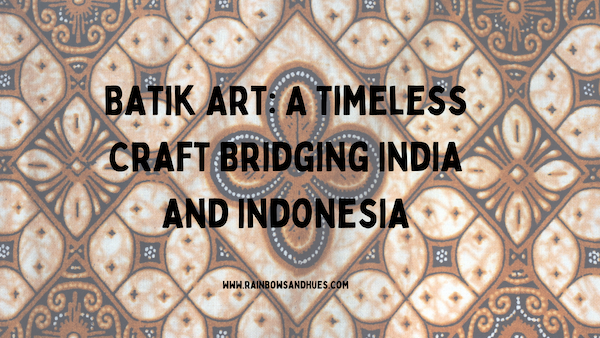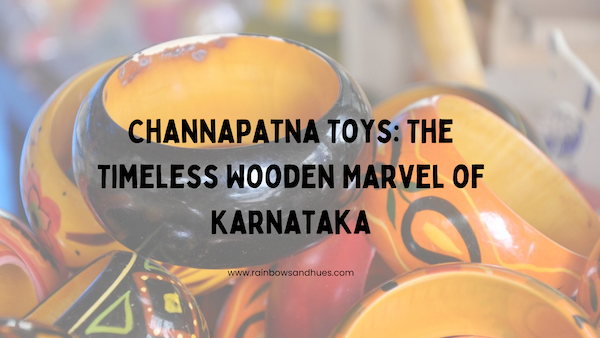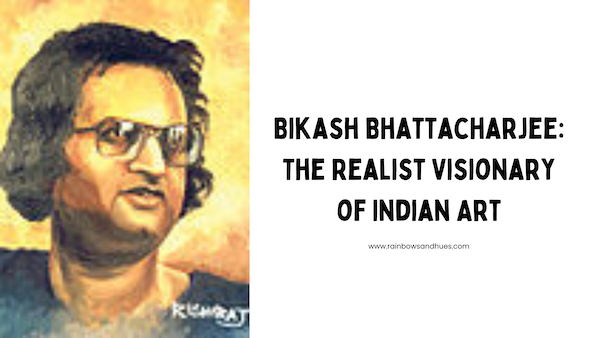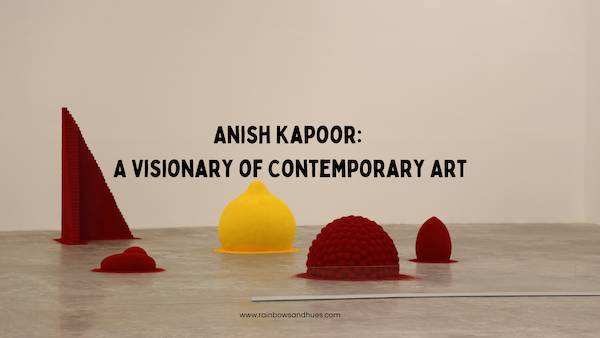Batik art is a centuries-old textile tradition that combines artistry with intricate craftsmanship. Known for its mesmerizing patterns and vivid colours, this art form has cultural and historical significance in India and Indonesia. Though these two regions have distinct styles and techniques, Batik art beautifully reflects the shared human pursuit of creativity and storytelling through textiles.
Also Read: The Rich World of Pithora Painting and Its Cultural Significance
The Origins of Batik
The term “Batik” originates from the Javanese words amba (to write) and tik (dot), describing the art’s method of creating patterns with wax and dye. While Batik is most famously associated with Indonesia, its roots stretch across cultures. Historical evidence suggests that forms of wax-resist dyeing existed in Egypt, India, China, and Japan as early as the 4th century BCE.
Batik reached its zenith in Indonesia, particularly on the island of Java, where it became a vital part of culture and tradition. In India, Batik’s evolution can be traced to ancient times, with its presence in the states of Gujarat, Rajasthan, and West Bengal. Both regions elevated this craft into an art form, developing unique methods, motifs, and applications.
Also Read: Alcohol Ink Art: An Exhaustive Guide
The Technique of Batik
Batik art involves a meticulous process. The essence of the craft lies in applying wax to cloth to create patterns and then dyeing the fabric. The wax resists the dye, leaving the coated areas in their original colour. The process can be repeated with different colours to achieve layered, intricate designs.
The primary tools include:
- Tjanting: A pen-like tool used to draw detailed patterns with molten wax.
- Cap (Stamp): Metal or wooden stamps for creating repetitive designs.
- Wax and Dye: Traditionally, beeswax or paraffin is used alongside natural or synthetic dyes.
The final step involves removing the wax by boiling the fabric and revealing the completed design. This process requires immense precision and patience, as even minor errors can impact the outcome.
Batik in Indonesia
In Indonesia, this art form is more than an art form; it is a cultural identity. Recognized as a UNESCO Intangible Cultural Heritage in 2009, Indonesian Batik reflects the country’s diverse traditions. Each region boasts distinct motifs and styles, often inspired by nature, mythology, and local stories.
For instance:
- Yogyakarta and Solo: Known for intricate patterns in earthy tones like brown, black, and cream, often symbolizing aristocracy.
- Bali: Features vibrant, bold colours with designs inspired by Hindu deities and folklore.
- Cirebon: Famous for mega mendung (cloud motifs) that symbolize harmony and spirituality.
Batik fabrics are commonly used in ceremonies, weddings, and traditional clothing, such as kebaya and sarong. The craft also influences contemporary Indonesian fashion, interior design, and accessories.
Batik in India
India has a rich history of resist-dyeing techniques, including Batik. Artisans in Gujarat, Rajasthan, and Madhya Pradesh have practised this craft for centuries. West Bengal’s Santiniketan emerged as a hub for this art form under the guidance of Nobel laureate Rabindranath Tagore, who encouraged its revival as part of his educational philosophy.
Indian Batik features vibrant colours and bold motifs, often showcasing floral patterns, religious symbols, and traditional geometric designs. The process is similar to its Indonesian counterpart, but Indian artisans sometimes use brushes instead of tjanting for waxing, resulting in bolder strokes.
Unlike Indonesian Batik, Indian Batik is more prevalent in home décor items such as wall hangings, bed linens, and tablecloths, along with sarees and dupattas.
Also Read: Incorporating Dried Flowers in Resin Art: A Guide
Unknown Facts
- Ancient Batik fabrics used natural dyes from plants, bark, and even insects.
- Traditional Indonesian Batik patterns were reserved for specific social classes, with certain designs worn only by royalty.
- Indian Batik gained prominence globally when Mahatma Gandhi encouraged its use to support the Swadeshi movement during India’s freedom struggle.
Global Influence
Batik’s universal appeal transcends borders. Today, it is celebrated worldwide, not only for its aesthetic beauty but also for its cultural depth. Designers from Europe and America have incorporated Batik into their fashion collections. Exhibitions and workshops across the globe highlight its significance, sparking renewed interest in this ancient craft.
Notably, this art form’s inclusion in modern fashion and home décor has fueled its popularity among younger generations. Artisans continue to innovate, blending traditional methods with contemporary designs to meet global demand.
Also Read: A Comprehensive Guide to Chalk Paints
How to Create Batik Art at Home
Creating Batik at home is both an engaging and rewarding experience. Here’s a simplified guide:
- Choose a Fabric: Natural fabrics like cotton or silk work best.
- Sketch a Design: Draw your desired pattern on the fabric with a pencil.
- Apply Wax: Use a brush, tjanting, or a stamp to coat the design with wax.
- Dye the Fabric: Submerge the fabric in a dye bath, ensuring even coverage.
- Repeat for Layers: For multicolored designs, reapply wax and dye in stages.
- Remove Wax: Boil the fabric to melt and remove the wax, revealing the final design.
The Future of Batik
As technology advances, this art form faces both challenges and opportunities. Mass-produced, machine-printed textiles threaten traditional handcraft methods. However, increasing awareness about sustainable and ethical practices has revived interest in authentic, handmade Batik. Governments, NGOs, and individual designers are working to preserve this heritage, providing training and support to artisans.
Also Read: Understanding Art Papers – 3 [Sketch Papers]
Conclusion
Batik art stands as a testament to human creativity and cultural exchange. Whether in the intricate patterns of Javanese kain panjang or the bold strokes of Santiniketan sarees, this art form captures the essence of storytelling through textiles. By celebrating and preserving this timeless craft, we ensure its legacy continues inspiring generations of art lovers and creators alike.
So, the next time you see a piece of Batik fabric, remember the labour of love and tradition behind its beauty.
Also Read: Lippan Art: A Unique Blend of Tradition and Craftsmanship
***
Hop over to www.rainbowsandhues.com to explore exciting offers on arts & craft supplies on our website!
Follow @rainbowsandhues on Instagram to get regular information on new products and deals!




